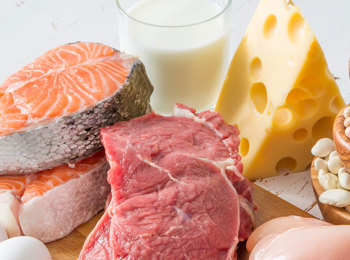Content hub
From application notes to blogs, news items to infographics, we've got a wealth of advice about VOC and SVOC analysis that we'd like to share with you. Simply use the search function or use the drop-down selectors to filter by content type, sampling method and/or application area to discover more.

Analysis of trace volatile organic compounds (VOCs) and odour in post-consumer recycled resins by thermal desorption and GC×GC–TOF MS
On-demand webinar

US EPA extends proficiency testing to the ‘PAMS’ network for organic ‘ozone precursors’
23 May 2024

Highly sensitive determination of trace-level chlorophenols and common odorants in drinking and environmental waters
Application Note 285

Automated sample preparation speeds up off-flavour research in the aquaculture industry
Aquaculture Research Institute (ARI) at the University of Maine, partnered with the US Department of Agriculture (USDA)

Headspace–trap analysis: Can you remove excess water and volatile interferences without losing volatile target analytes
Instant Insight 008

A deep dive into hydrogen fuel analysis for a cleaner future
On-demand webinar

Flavour and fragrance discovery: Unique high-capacity sorptive extraction to find what you've been missing
Webinar

Detection of ODSs and HGSs in industrial zones using a cryogen-free preconcentration GC–MS method
LCGC: The Column, April 2024

The invisible toxic air we breathe
On-demand webinar on environmental monitoring methods for VOCs in India

Detection of ozone-depleting substances and halogenated GHGs in industrial zones with a cryogen-free preconcentration–GC–MS system
Application Note 175

Room temperature and sensitive analysis of haloanisoles in wine using Vacuum-assisted headspace SPME with GC/ECD
Application Note 174

Breathe new life into your ageing GC–MS: State-of-the-art in automated sample extraction and concentration
On-demand webinar.

Simple, non-invasive sampling of short-chain fatty acids in saliva as potential indicators of disease using HiSorb sorptive extraction
The Chemistry Lab for Analytical Technologies and Sensors, Dept. of Chemistry, University of Pisa, Italy

Novel high throughput TD–GC for breathomics workflows
Presented at IABR (International Congress for Breath Research) 2024

Eliminating lab dependency on helium as a carrier gas for TD–GC–MS
Presented at Pittcon 2023

Towards field optimised, near-real time, continuous monitoring of trace-level chemical warfare agents in air
Presented at International workshop on the analysis of chemical warfare agents to mark the 50th anniversary of VERIFIN

Enhanced analyte extraction with automated multi-phase high-capacity sorptive extraction (HiSorb™) for GC–MS
Presented at the 2nd Advances in Separation Science conference, Liege, 28–29 June 2023.

Extending established chemical warfare agent monitoring methods to emerging priority compounds using TD–GC–MS
Presented at International workshop on the analysis of chemical warfare agents to mark the 50th anniversary of VERIFIN, November 2023




